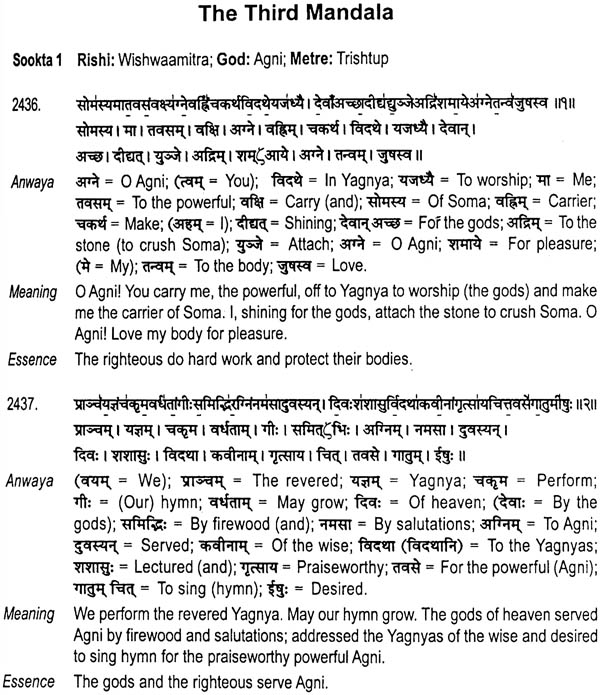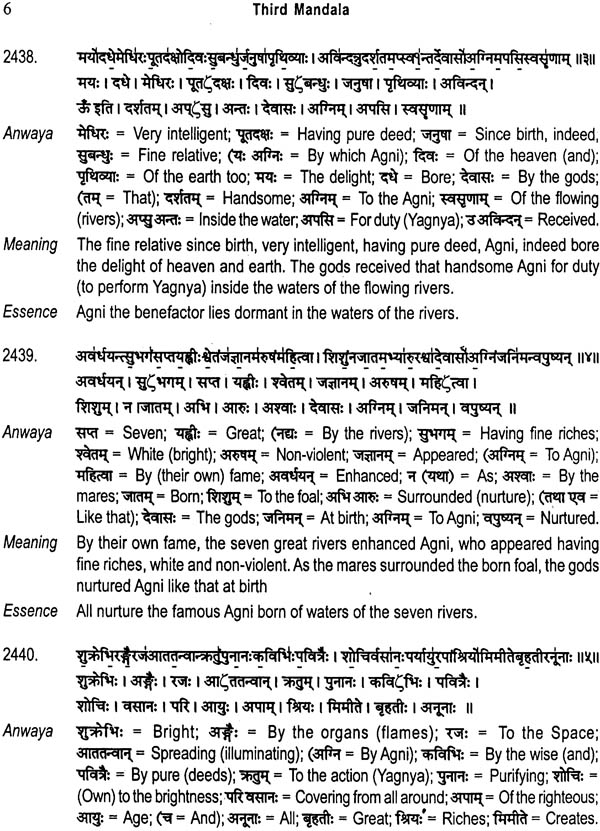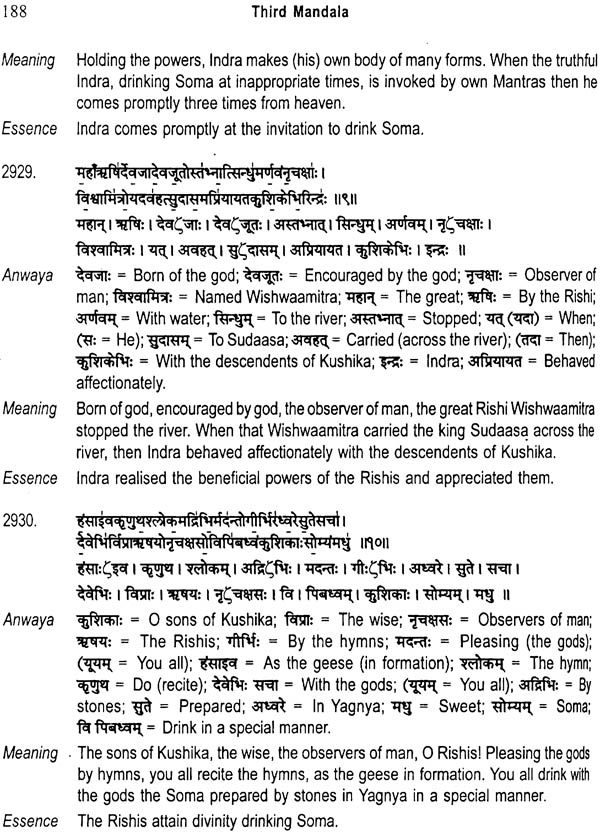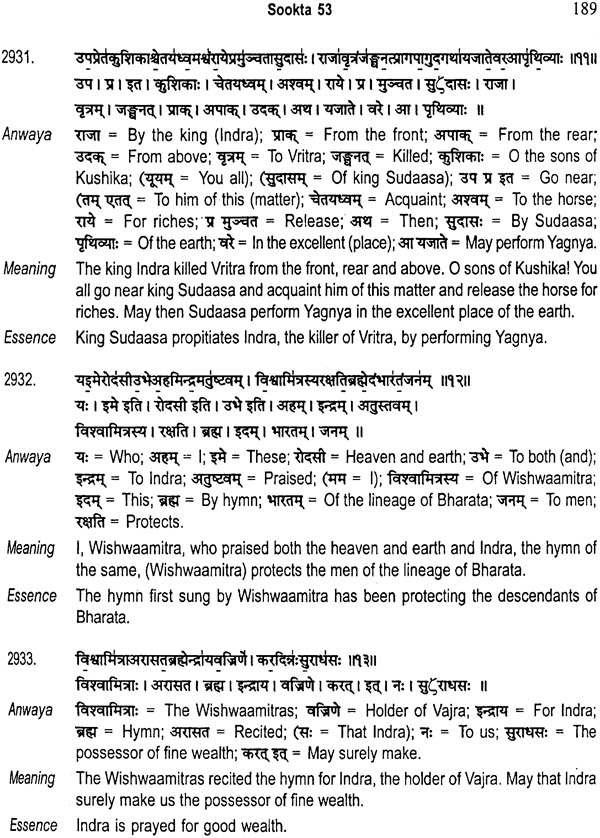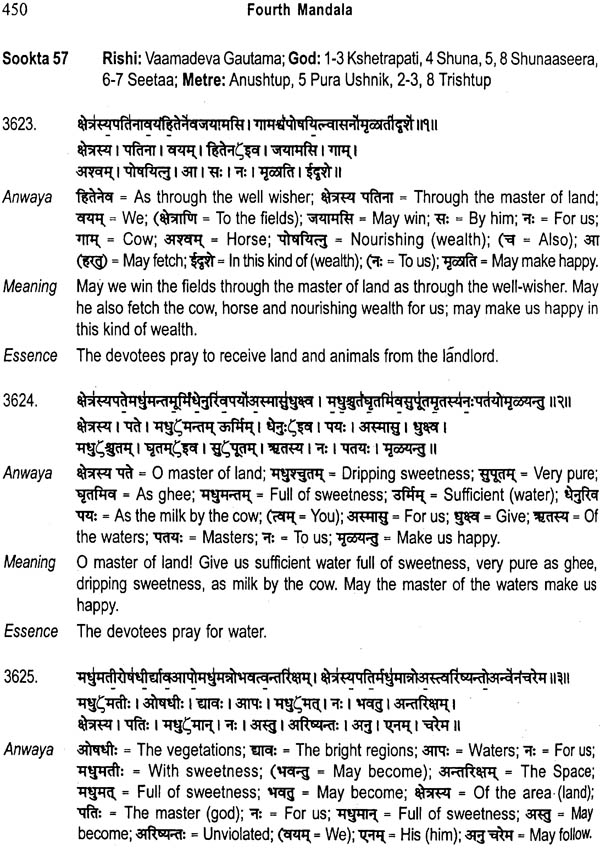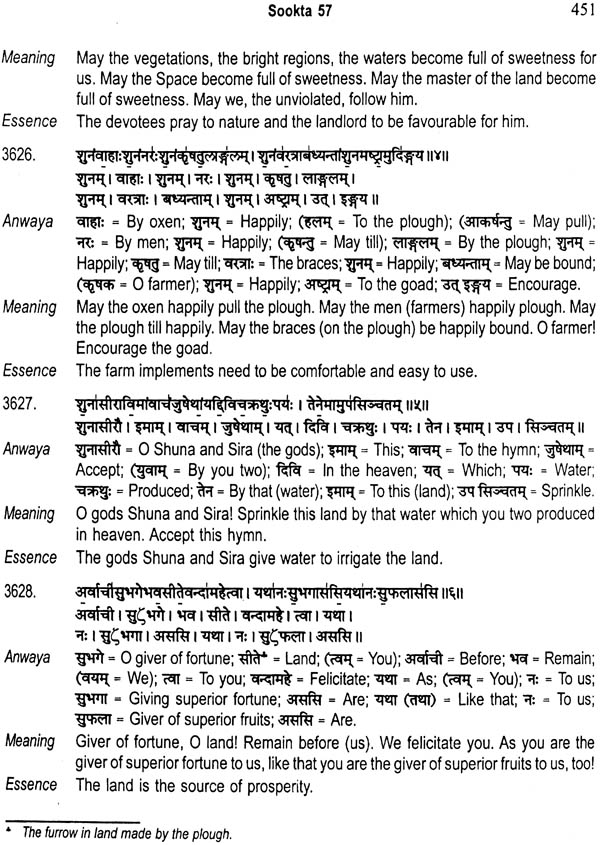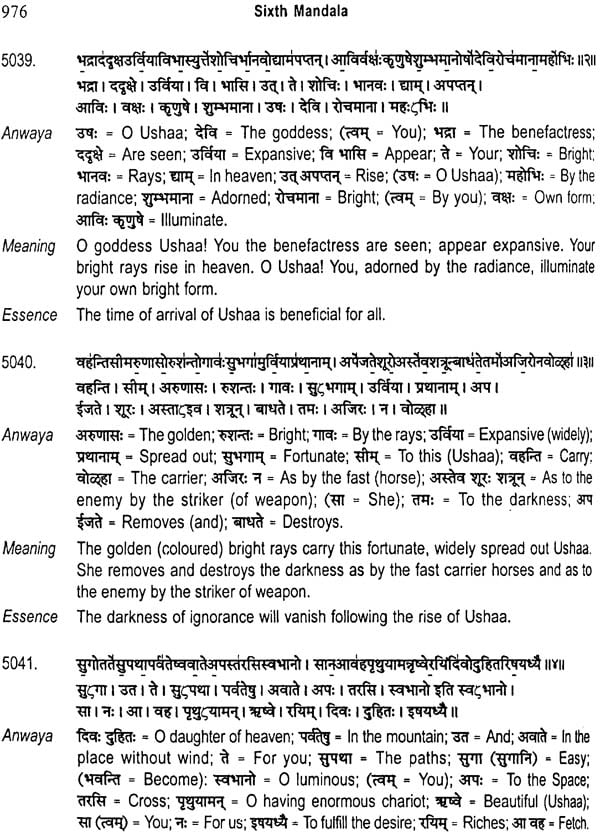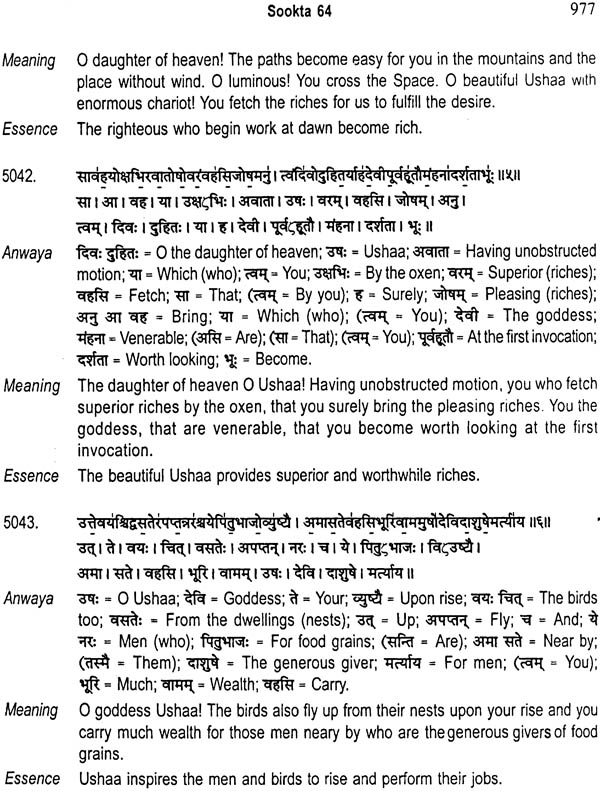
Modern English Translation of The Rig Veda Samhitaa (Volume II)
Book Specification
| Item Code: | NAJ093 |
| Author: | Prasanna Chandra Gautam |
| Publisher: | Bharatiya Vidya Bhavan |
| Language: | Sanskrit Text with Word To Word Meaning and English Translation |
| Edition: | 2014 |
| ISBN: | 9788172765064 |
| Pages: | 1034 |
| Cover: | Paperback |
| Other Details | 9.5 inch x 7.0 inch |
| Weight | 1.80 kg |
Book Description
Preface
The first paperback limited edition was warmly received by many scholars in Nepal, although it is Shukla Yajur Veda which is traditionally taught there. Unfortunately these volumes could not be made available to the book shops in India and abroad. This was due to the historical trade restrictions that exist between Nepal and India. Hence it is a matter of great comfort to me that Bharatiya Vidya Bhavan (BVB) has undertaken to publish this as a peer reviewed Indian edition to make this reference book easily available to the readers in India and elsewhere.
I am particularly grateful to the late Padmashree Mathoor Krishnamurti, the Director of BVB at Bangalore whose approval of this project had provided me with great encouragement. Unfortunately, he had passed away before this could be published. I am very thankful to his successor Shri H.N. Suresh as the new Director who upheld the decision to recommend its publication by BVB.
I should like to express my appreciation and profound thanks to the Bhavan's Executive Secretary Shri H. N. Dastur and his panel of experts at Bhavan Head Quarters, Mumbai, for all their cooperation and hard work in bringing out this edition. His colleagues Shri P. V. Sankarankutty and others have done a magnificent job.
Very little has been altered in this edition, apart from a few glaring errors in the proof copy. The technical difficulties in getting the full set of the Sanskrit font as used in the original Saayana edition about 160 years ago required the manuscript to be scanned and printed. This incurred additional cost in printing. Although still expensive, the price of the book hardly matches the cost of production.
No English translation of the Rig Veda has been presented like this in a unanimous and collective manner by a group of experts. I hope that the scholars in India and elsewhere will find this a useful addition to their collection of authentic books on the Rio Veda. I should be a fateful to receive your comments and criticisms.
Introduction to the Third Mandala
This Mandala, comprising of sixty two Sooktas and having six hundred and sixteen Mantras, is presented by Rishi Wishwaamitra and his descendants.
The Sooktas 1-30 are mostly for Agni. The first Sookta gives the origin of Agni from Space and proclaims that man is His son to whom He has given the light. The seventh Sookta shows the relationship of Agni with heaven and earth and the eighth Sookta, with the vegetations. Sookta nine shows Agni as lightening which causes rainfall. The concept of the cycle of creation and destruction is depicted in the Sookta 16.
The Sooktas from 30-53 are mostly for Indra. Some social norms like adoption, inheritance for the daughters, and the beginnings of astronomy are seen in these Sooktas. Sookta 53 is dedicated to a multitude of gods and contains many interesting suppositions and. exclamations, often misinterpreted or avoided by the previous scholars. The Sookta 54 calls heaven the father and earth, the mother. The Sookta 56 indicates the importance of the number three; three regions, three types of energies, three phases of Yagnya and three types of wealth. The Sookta 62 has the world famous Gaayatree as its tenth Mantra. This Gaayatree Mantra seeks to increase ones' wisdom (knowledge) by contemplation on the source of light, and is equally applicable to the followers of any religion and also to atheists. The eleventh and twelfth Mantras are also of great importance. Wishwaamitra is credited with three treatises of exceptional wisdom. They are Wishwaamitra Kalpa, Wishwaamitra Samhitaa and Wishwaamitra Smriti - all propounding and espousing Gaayatree - the mother of the Vedas.
Rishi Wishwaamitra was an enlightened seer. We learn in 333.9-13 that he was able to harness the river Sutlej. The Mantras 9-12 show him to be the principal royal priest of king Sudaasa, He supported king Sudaasa in the long war with the chieftain of the Daasas in the famous Daasaraaja Yuddha.
Rishi Wishwaamitra is taken as an example of a human being who could attain the lofty heights of 'Brahmarshi', become the most revered 'Saptarshi', and create a parallel world by his own austerity, prowess and will. He had rivalry with Rishi Wasistha at first but latterly the two became friends. Many have interpreted Sookta 53 to have reference to this rivalry. There were many visionary seers (Rishis) in his lineage. The first Mantra of Rig Veda ' was given by his son, Madhuchhandaa Waishwaamitra.
Contents
| 1. Third Mandala (Sooktas 1-62) | 1 |
| 2. Fourth Mandala (Sooktas 1-58) | 237 |
| 3. Fifth Mandala (Sooktas 1-87) | 457 |
| 4. Sixth Mandala (Sooktas 1-75) | 729 |
| 5. References | 1017 |
| 6. Bibliography | 1018 |
| 7. Appendix - 1 : Sookta for Indra, Agni, Vaayu and Soma | 1029 |
| 8. Appendix - 2 : Introduction to religious ceremonials | 1031 |
